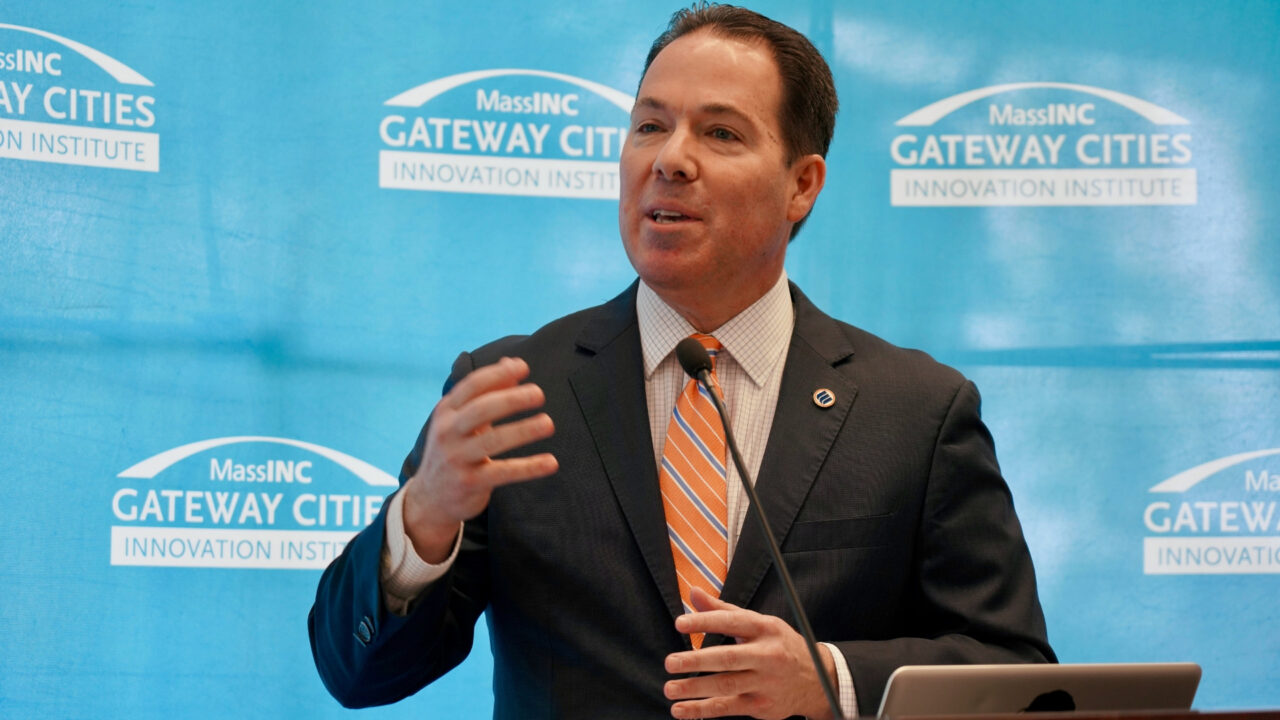Five big picture takeaways from a discussion on the future of public-private partnerships in Gateway Cities
On Monday, May 6th, MassINC convened Gateway City mayors, economic development directors, educators, nonprofit executives, and business leaders for a meeting on the future of public-private partnerships. Hosted by the Federal Reserve Bank’s Working Cities Challenge team and with generous financial support from Eastern Bank and Blue Cross Blue Shield of Massachusetts, this gathering provided an opportunity to continue a discussion we began back in Lawrence in 2015.
As detailed in a MassINC report released at the Lawrence event, the value-proposition of a public-private economic development partnership is straightforward: these organizations create a table where leaders can come together across sectors and pursue initiatives that no one group could accomplish on their own. Moreover, the breadth of relationships partnerships can harness allows them to maintain steady focus on longer-term challenges and positions them to take on larger, higher-risk initiatives.
At the 2015 meeting in Lawrence, 10 ingredients were revealed as the secret sauce that differentiate successful partnerships. These qualities include “leaving yourself at the door” and bringing only the community’s interest to the table; making the table a place for curiosity and introspection where leaders can come together to learn; choosing the right focus, remembering always that “the main thing, is the main thing, is the main thing” and then owning it and measuring it by relentlessly collecting statistics to see where you are winning and losing.

Reflecting on the rich discussion up in Lawrence, Bob Rivers, CEO of Eastern Bank, welcomed leaders back and encouraged them to share what they had accomplished and learned over the past four years. To provide an example of how our meeting could be productive for all, he described the success of the small business loan fund developed by the Lowell Plan, replicated by the Lawrence Partnership, and now making its way to Haverhill.

Over the course of the day, Gateway City leaders enthusiastically followed Bob’s charge, describing shared challenges, where learnings from one community could be shared with the next. Equally important, they offered high-level takeaways from their experience in recent years.

Here are five particularly compelling observations:
- The most effective partnerships focus on building systems rather than programs. Partnerships generally have the most impact when they are able to use their limited capacity to help coordinate and integrate efforts across communities rather than leading new programs of their own.
- Partnerships can play a vital role helping diverse cities become more inclusive. Across all sectors, the demographic makeup of Gateway City leaders does not reflect the changing demographics of Gateway City residents. Partnerships can play a central role helping cities address this challenge by ensuring that successful practices to increase diversity and inclusion are universally adopted in private-sector companies as well as nonprofits and public sector agencies.
- Leaders from outside the community can have outsized success leading partnerships. Choosing the right leader is essential. While they don’t have pre-existing relationships locally to draw upon, leaders from outside the community often make great partnership directors because they are more likely to be seen as independent brokers.
- More established partnerships can think bigger and longer-term, but like mature corporations, they must work harder to remain innovative. Partnerships just getting off the ground need quick victories in order to establish themselves and build buy-in; older partnerships can be perceived as the establishment, so they must work harder to create spaces for newcomers to engage, contribute, and bring fresh perspective.
- Partnerships need seed capital. All Gateway Cities would benefit from a stable organization to bolster public-private partnerships, but many don’t have them. Overtime, these partnerships can find ways to raise money to sustain themselves, but they need an entity that can incubate them for several years. Finding an entity willing to take that on can be challenging. In recent years, Gateway Cities have seen partnership activity through the Transformative Development Initiative and the Working Cities Challenge. While these efforts are winding down in many communities, they have planted seeds for future collaborative efforts. Capital to help fertilize this work will be particularly valuable during the transition.

MassINC thanks our sponsors and all those who participated in our gathering. We look forward to continuing to advance the conversation around economic development in our Gateway Cities through public-private partnerships.


